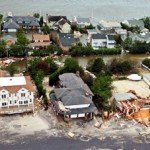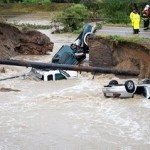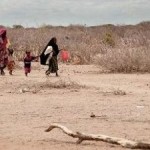The Eastern North Pacific basin had above-average hurricane activity in 2013. There were a total of 17 storms, eight of which intensified to hurricane status, and one (Raymond) became a major hurricane.
Two tropical cyclones from two separate basins (Ingrid in the North Atlantic and Manuel in the Eastern North Pacific) struck Mexico nearly simultaneously on 15 September, an unusual event that last occurred in 1958. In total, 24 of Mexico’s 31 states were impacted.
As of early November, the Western North Pacific typhoon season recorded 30 storms, including 13 typhoons, above the 1981-2010 average of 26. Typhoon Haiyan (known in the Philippines as Yolanda) was one of the most intense tropical cyclones ever to make landfall, and the most powerful cyclone of the year, cutting a devastating trail through the Philippines and seriously impacting on Viet Nam.
The North Indian Ocean had a below-average season with only two tropical cyclones compared with the 1981-2010 average of four. Cyclone Phailin evolved into the strongest storm in the North Indian basin since 1999. Improved meteorological early warning systems and preparedness were credited with avoiding a major humanitarian disaster.
Click here for WMO’s Provisional Annual Statement on the Status of the Global Climate 2013.
Source: WMO.
The provisional statement is being released at the 19th Conference of the Parties (COP19) to the United Nations Framework Convention on Climate Change (UNFCCC), taking place in Warsaw, Poland. Final updates and figures for 2013 will be published in March 2014. Temperatures are from January to September, but data on tropical cyclones is up to October 2013. The WMO global temperature analysis is principally based on three complementary datasets maintained by the Hadley Centre of the UK Met Office and the Climatic Research Unit, University of East Anglia, United Kingdom (combined); the National Oceanic and Atmospheric Administration (NOAA) National Climatic Data Centre; and the Goddard Institute of Space Studies (GISS) operated by the National Aeronautics and Space Administration (NASA). Additional information is drawn from the ERA-Interim reanalysis-based data set maintained by the European Centre for Medium-Range Weather Forecasts (ECMWF).
World Meteorological Organization (WMO) is the United Nations’ authoritative voice on weather, climate and water.














